Analysis by Keith Rankin.


Finland and Greece are in the East of Europe, but generally thought of as western countries, having not been behind the ‘Iron Curtain’ during the Cold War. They can be seen as a benchmark to help understand the other Eastern European countries. And, like other eastern countries, they had low levels of Covid19 in the first European death wave (April to Jun 2020) of the pandemic. In that quarterly period, nevertheless, Finland has more excess deaths than – about eight percent – than any of the other countries shown below.
Greece had negative excess deaths in that first death wave. In particular, Greece managed to protect its elderly population. In subsequent waves, Greece had covid mortality lower than in many West European countries, though well in excess of Finland. As we will see for Eastern Europe, its excess mortality, predominantly in 2021, significantly featured the ‘younger’ age groups. In the year to June 2021, Greece had excess mortality of 10 percent, which compares with 2 percent in Finland and 2.5 percent in New Zealand (noting that, in New Zealand, excess mortality was not due to Covid19).
(Note that the word ‘adjusted’ in the title is a best attempt to correct for discrepancies in the age structures of the populations, noting that World War 2 (WW2) had a significant impact on post-war demography.)

Estonia is an ex-Soviet neighbour of Finland, as is ethnically related to Finland. It is unusual in that it shows a generally upwards trend in excess mortality; most countries show clear ‘waves’ of covid impact. The predominance of baby boomer deaths probably reflects much larger numbers of people in this age group in the population. Ideally, we would be looking at excess deaths by ‘year of birth’ rather than by ‘age in years’. In 2015, a significant minority of the 65-74 age group was born in the war years. By 2021, none were. Nevertheless, it is clear that much of the mortality burden was born by people born in the decade after WW2. Excess mortality in Estonia in the year to June 2021 was 12 percent.
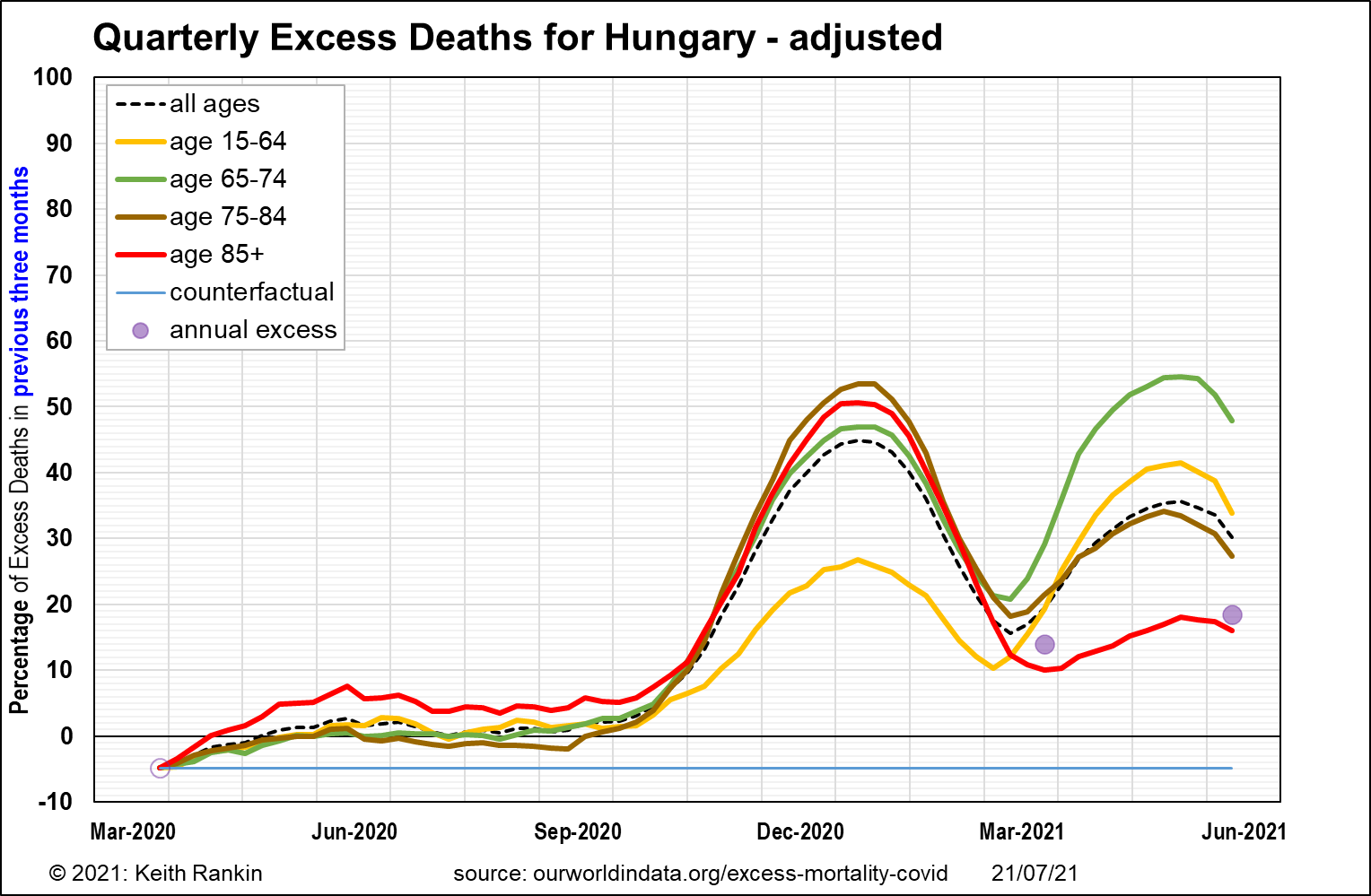
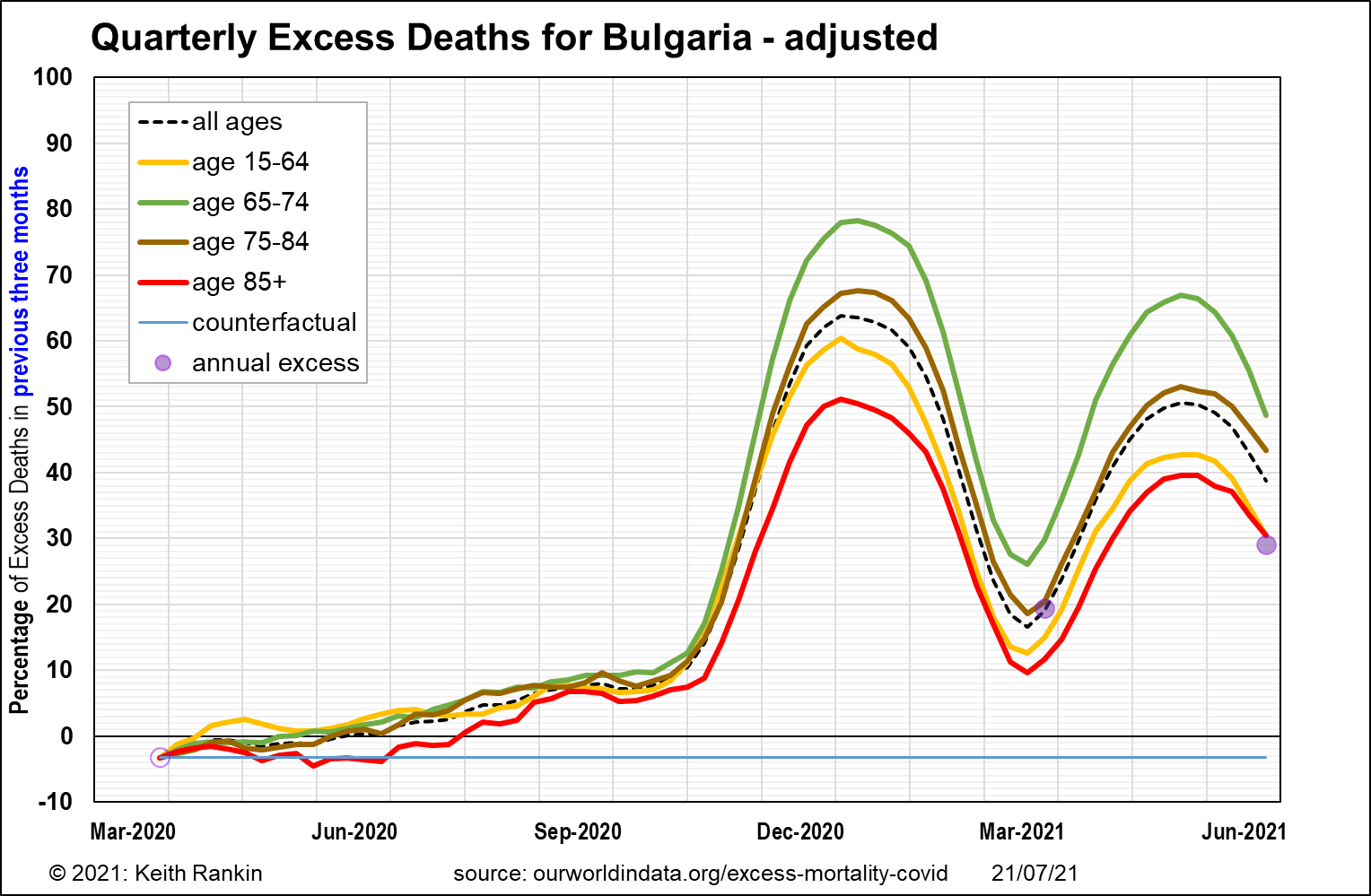
Hungary had two severe waves of Covid19 mortality. In its second wave, for several weeks in 2021 its official covid death statistics were the highest in the world. We see that younger people died as a result of Covid19 in much greater number’s in that second wave. This will reflect in large part the vaccination of the older population.
Bulgaria shows the same waves as Hungary, but consistently higher excess deaths for post-war baby boomers. Lower life expectancy in Bulgaria will mean that 65-74 year-olds there will have been subject to more comorbidities, so will have been more likely to die than in many other countries.
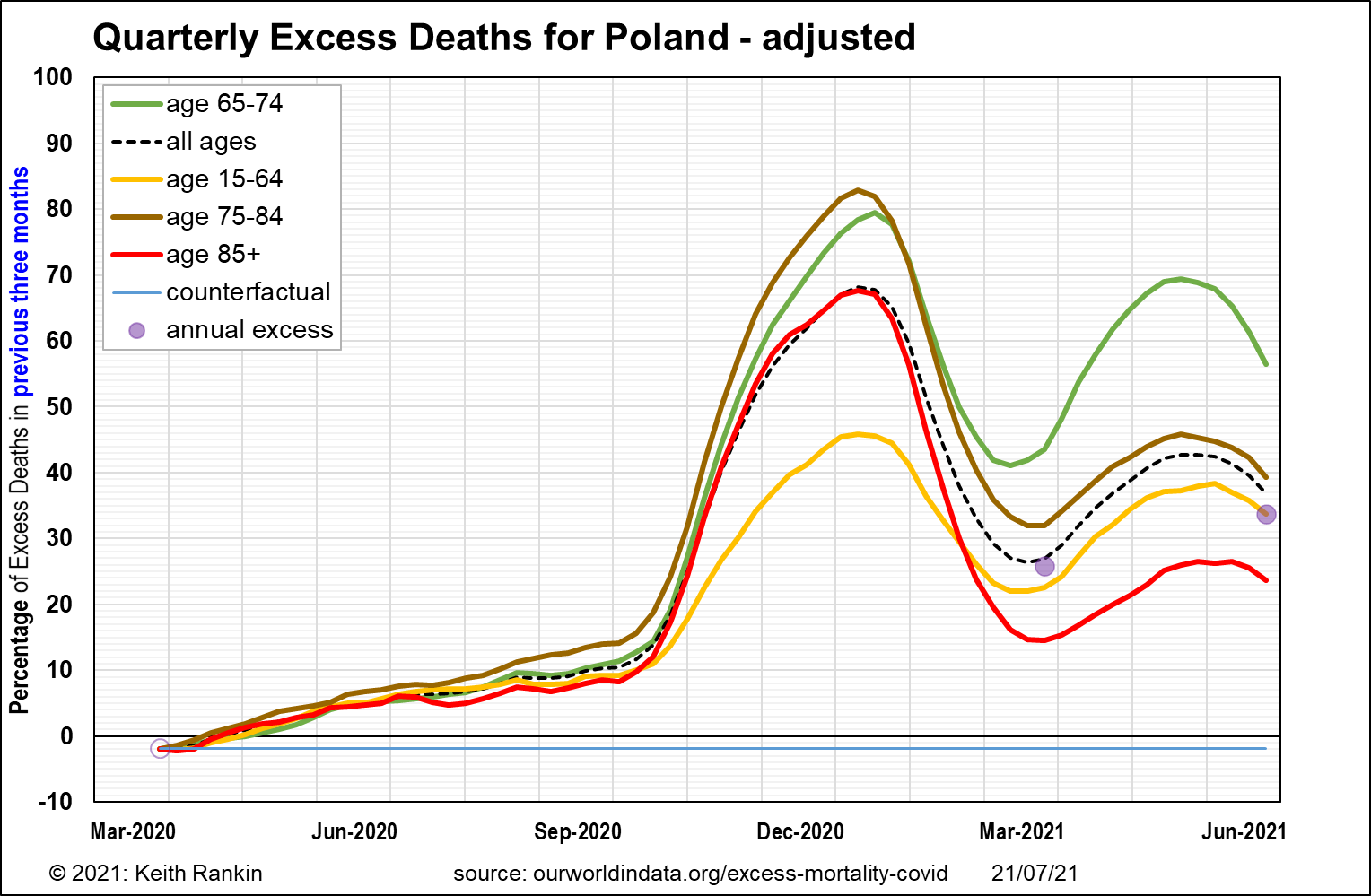
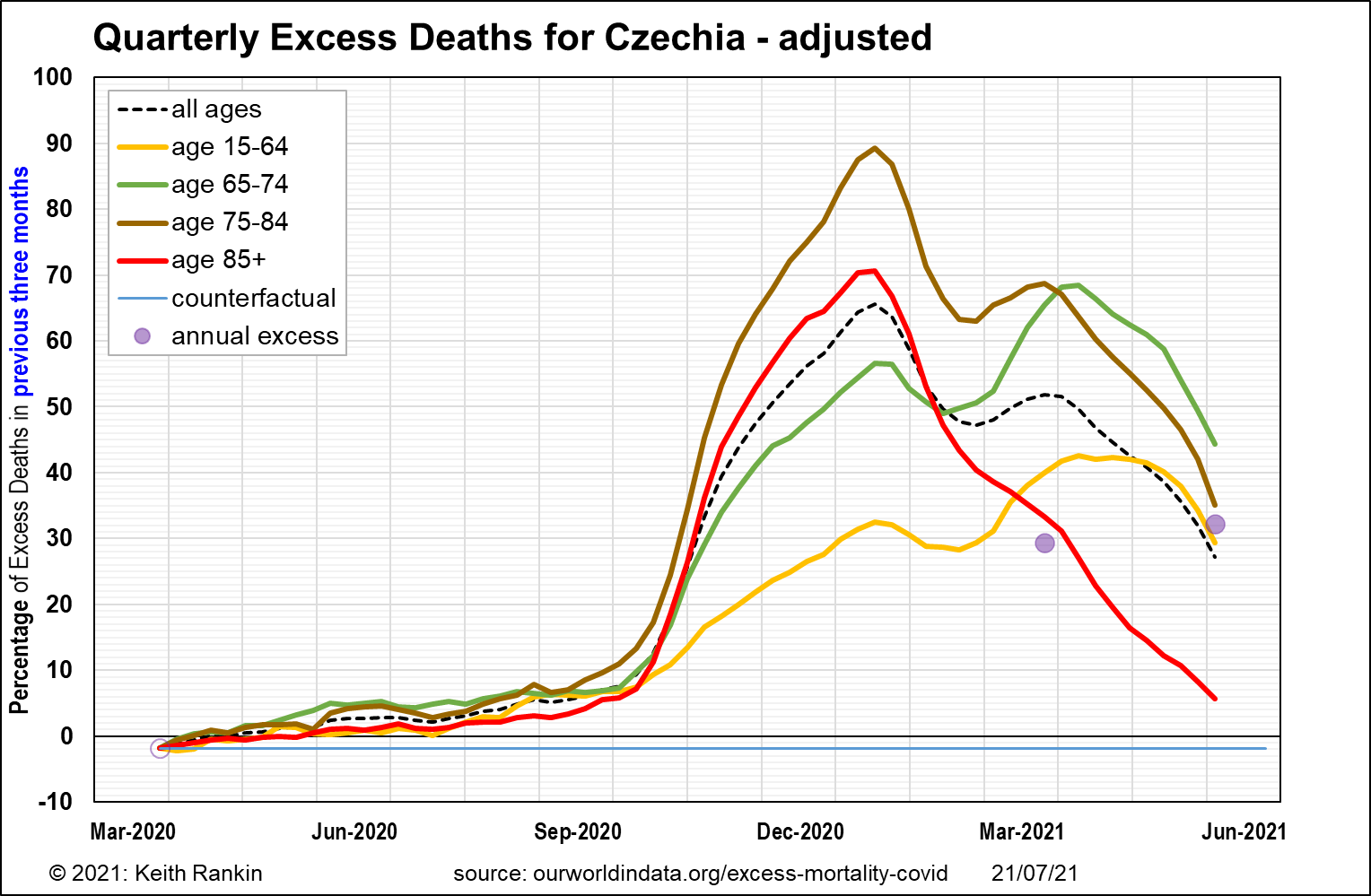
Poland has even higher mortality than Bulgaria, mainly because of covid’s greater impact on the oldest segment of the population. For the European Union, Poland has the highest overall excess deaths for the year to June 2021, at 34 percent.
Czechia was similar to Poland, with excess deaths for 75-84 year olds reaching a three-month high of 90 percent in the New Year; that means that half of all deaths for that age group, then, were due to Covid19. In its second wave, Czechia had particularly high death rates of younger people.
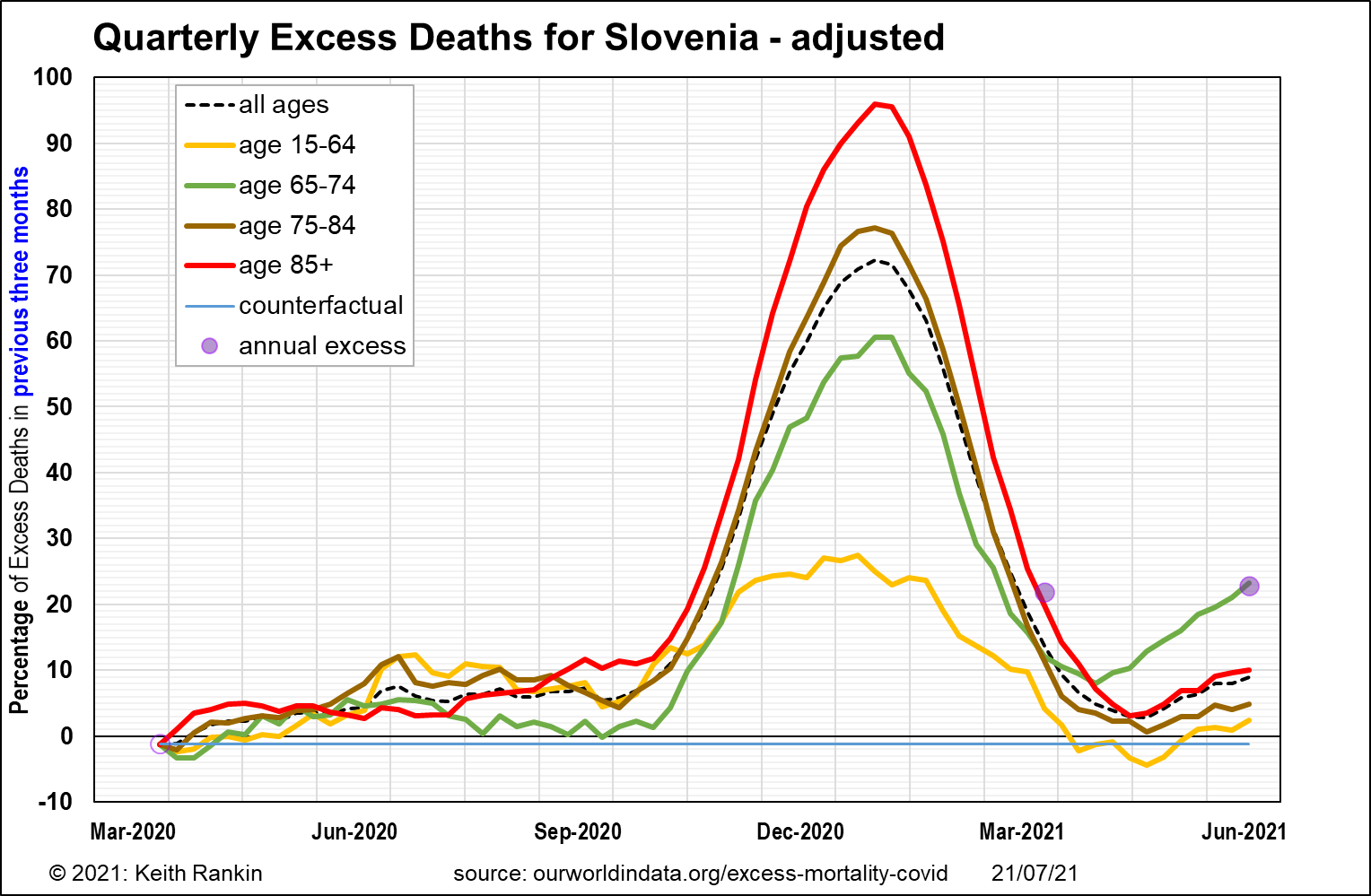
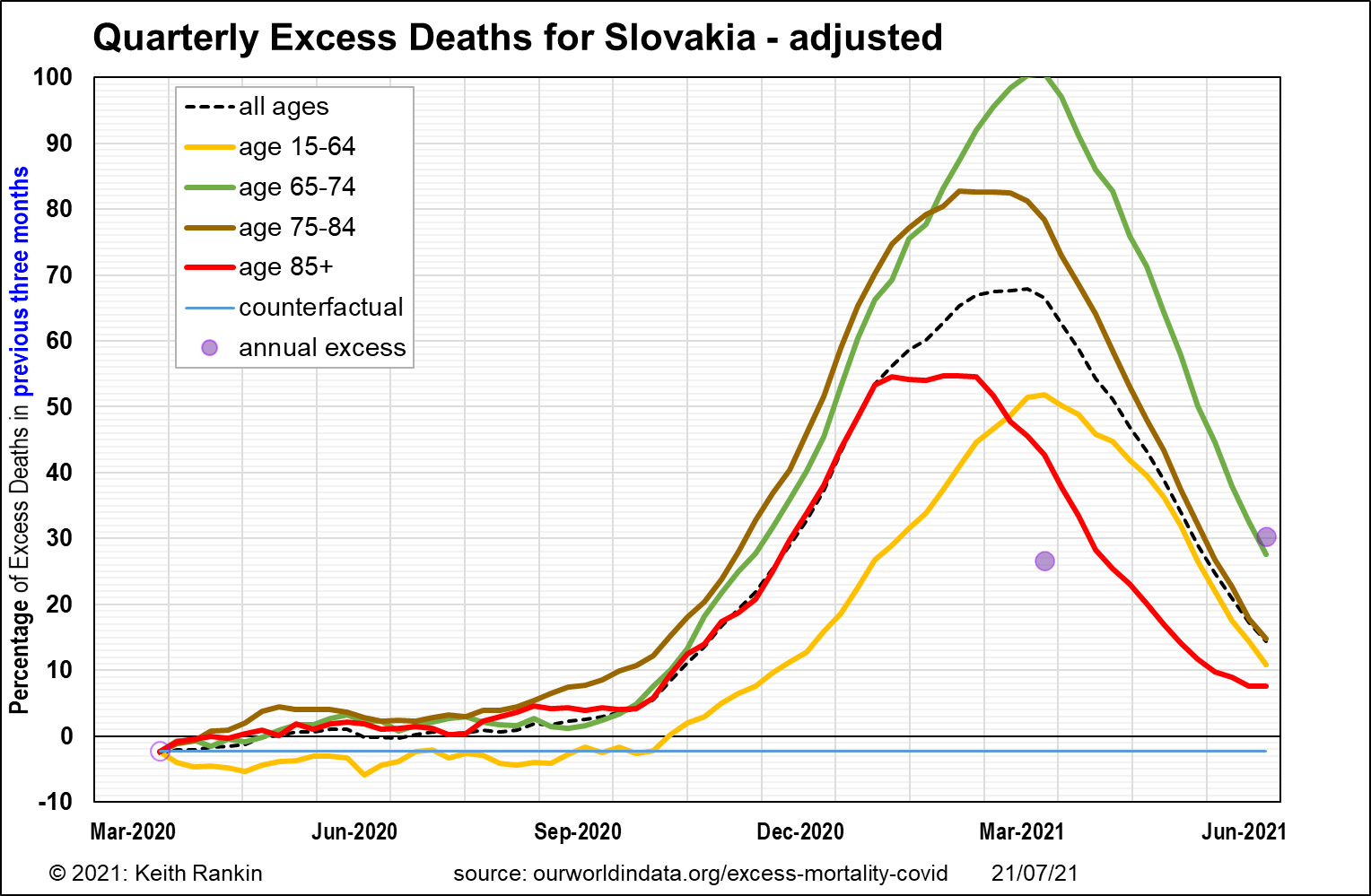
Finally, Slovenia had a particularly high peak in the first East European wave, especially affecting older people; as in western Europe (especially Switzerland), a case of failure to protect those in nursing homes and the like.
On the other hand, Slovakia was among the last to see the rampages of the pandemic. In its case, the disease was not checked at the point that it was in most other European countries. Baby boomers reached 100 percent excess deaths in the first quarter of 2021. You can see the two East European waves by looking at the oldest group (red) and the youngest group (yellow). For the other two age groups the two waves merged into one viral tsunami.
Reflection
My general impression is that the ‘fortunate’ avoidance of Covid19 in its first European wave was a significant determinant in the death rates of the younger elderly (say, people aged 60-80). The problem is likely to be that Eastern Europe had less community immunity to Covid19 at the onset of winter, and also had reduced immunity to respiratory viruses in general, given the reduced opportunity for common colds and the like to transmit throughout 2020.
Also, we note that the ‘delta variant’ has never been a factor (so far) in Eastern Europe. The near-forgotten ‘Kent variant’ may have played a role in East Europe’s second wave. Yet clearly Eastern Europe suffered from both high transmissibility rates, and death rates only matched in South America (which also was not affected by ‘delta’). Rather than being a worse variant of Covid19, East Europe seems to have become unusually vulnerable to any variant, a ‘perfect storm’ of lesser general immunity to respiratory infections, a regular cold winter, and poor defences at its borders to the west.
Note: Sweden
In the quarter to June 2020, Sweden had excess deaths of 25 percent, with over 30 percent for people aged over 75. However, in the year to June 2021, Sweden’s excess deaths are 1.5 percent, compared to 2.5 percent in New Zealand. There is no sign’, so far, of a ‘delta’ outbreak in Sweden. (Netherlands, however, a country with a similar experience to Sweden, does have widespread delta, though not as yet many arising deaths.)






